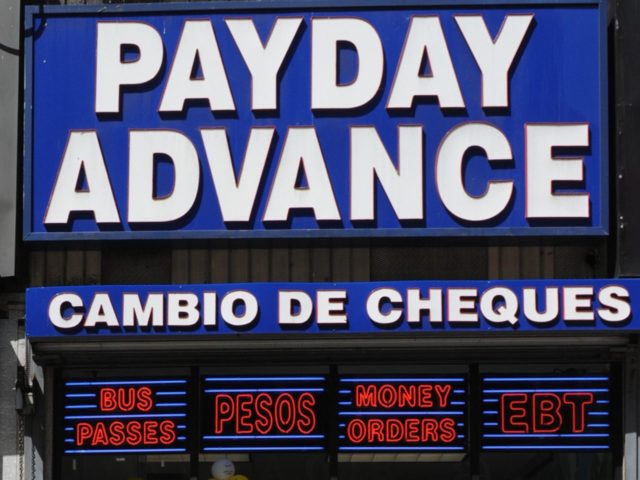The California Department of Business issued a new report that reveals seniors are the largest group among the almost half million Californians who took out a payday loan at interest rates of up to 30 percent last year.
California’s 2003 “Deferred Deposit Transaction Law’ shifted the regulation of payday lenders from the Department of Justice to a new Department of Business Oversight that is required to issue annual reports on borrower performance and their demographics.
Payday loans are structured so that the borrower gives the lender a check for how much money he or she wants, up to $300, minus a fee that cannot exceed 15 percent of the check amount. The lender then accrues daily compounded interest at rate of between 12 to 30 percent for up to 31 days, to defer cashing the check.
According to the DOB report for 2016, there were 236 licensed payday lenders operating out of 1,854 locations that generated loans with an average size of $251 for a 17-day average period to 1.8 million Californians. On the 11,501,880 short-term payday loans totaling $3.1 billion issued in 2016, the industry made a stunning $458.5 million in fees.
Total payday lending was down by almost 25 percent last year from $4.17 billion in 2015, probably due to improving employment prospects. But the number of payday loans fell by only 6.2 percent, because the largest group of borrowers was senior citizens (age 62 and older).
Seniors accounted for 2.7 million loans in 2016, about 23.4 percent of all payday loan borrowing. Most seniors that utilized payday loans took out an average of 10 last year. As a result, the seniors’ effective annual percentage rate of interest was a stunning 372 percent.
Most senior citizens did not initially suffer much financial loss at the start of the 2008 Great Recession, because the vast majority of seniors invest their retirement savings in fixed income investments, usually insured through bank certificate of deposits. The 2008 yields on CDs averaged 3.38 percent for a six-month term and 3.51 percent for a one-year term. Those yields were about the same as the average CD for the prior 15 years, according to the Federal Reserve.
But the Federal Reserve’s zero-interest rate policy caused CD yields to crash by about 90 percent by 2011, to under 0.25 percent for a six-month term and 0.38 percent for a one-year term. CDs remained at those historic lows for the next five years, drastically cutting seniors’ income and causing seniors’ to lose about 2.0 percent annually from inflation.
The average American family suffered income losses of about $1,656 from 2009 to 2016, according to Politico, but those losses were heavily concentrated among the 47.7 million seniors age 65 and older that have limited employment opportunities and are almost completely reliant on Social Security and interest income on savings to survive.
The Pension Rights Center reported that for 2015, half of all seniors received less than $22,887 in yearly income from all sources, and half of all senior households received less than $38,515 in yearly income from all sources.
The California Department of Business is expressing concerns about seniors being harmed by payday loans. But the government’s depressing of CD yields, while inflation rises, would seem to explain why many California seniors need a payday loan each month to stretch until their Social Security check arrives.

COMMENTS
Please let us know if you're having issues with commenting.